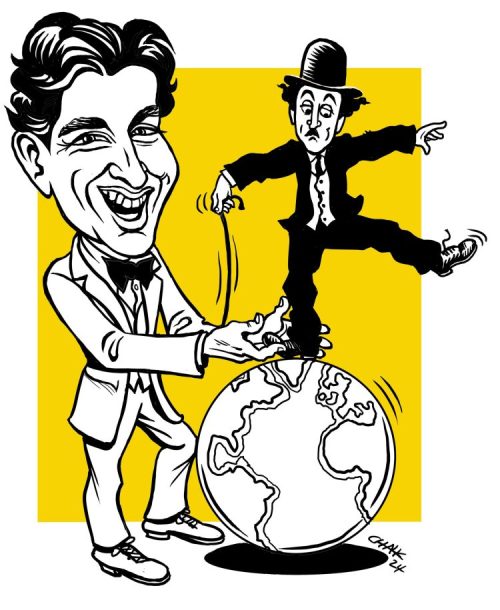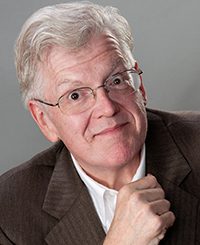
Event details
- November 19, 2024
- 7:00 pm - 8:30 pm
- Hughes Main Library, 25 Heritage Green Pl, Greenville, SC 29601
- 864-244-1499
To watch the recording Click Here
Cost: Free

The Charlie Chaplin Talk is a part of the Library Talk Series celebrating a 27-year community collaboration between Greenville Chautauqua and the Greenville County Library System co-sponsoring talks about the historical figures who will appear on stage.
Events
-
06 Feb
-
06 Feb
-
07 Feb
-
08 Feb
 Larry Bounds has presented Einstein for Chautauqua audiences since 2011 in South Carolina, North Carolina, Colorado and Florida. He has also presented other Chautauqua programs since 2002 including Churchill, Disney, Cronkite and Houdini for audiences across the country from Ohio to Colorado.
Larry Bounds has presented Einstein for Chautauqua audiences since 2011 in South Carolina, North Carolina, Colorado and Florida. He has also presented other Chautauqua programs since 2002 including Churchill, Disney, Cronkite and Houdini for audiences across the country from Ohio to Colorado.
Larry has a BA in theater from The University of Tennessee and an MS in English Education. He is National Board Certified with 35 years of classroom teaching experience including many years as an Advanced Placement instructor. He was honored as his school’s Teacher of the Year and in 2019 was named as one of Upstate South Carolina’s Most Influential Educators.
He is a member of Mensa, the high IQ society, and serves on the Executive Committee of his regional Mensa chapter.
Charlie Chaplin
Silence to Sounding—America’s First Celebrity Filmmaker
“The only thing you can believe in is yourself. You must fight for what you want.” – Charles Chaplin
Aboard SS Cairnrona in 1910 passengers sat uncomfortably cramped. Nearing the end of a twelve-day voyage, there ahead—at last—was land in sight. A twenty-one-year-old vaudevillian sprang to his feet. Leaning over the deck rail, he began to shout. “America, I am coming to conquer you! Every man, woman and child shall have my name on their lips! Charles Spencer Chaplin!”
Though this anecdote may seem broadly stylized, it conjures a fitting clarion call of arrival. Within five years, “Chaplinitis” flourished throughout the nation and swiftly circled the globe. Audiences flocked to see two-reel Chaplin shorts. From large cities to small towns, there were crowded Chaplin look-alike competitions for his signature character, the Tramp. There were also professional knock-offs who attempted to capitalize on the character’s popularity. It was easy to detect imitation. In spite of the toothbrush mustaches, bowler hats and canes, there was an important ingredient distinctly native to the genuine article.
Chaplin’s Tramp was formed, in part, through experiences growing up in South London poverty. The counterpoints of humor and pain fashioned an enduring figure.
While boarding at work houses and schools for destitute children, Chaplin attended school until the age of nine. Chaplin reflected, “I didn’t have to read books to know that the theme of life is conflict and pain. Instinctively, all my clowning was based on this.” His mother was in and out of psychiatric wards. Rarely present in his earliest years, Charles Senior’s absence was categorical by the time Charlie was twelve. Chaplin had little choice but to endure the world and learn to move within it while living without. He knew poverty; he knew hopelessness. He developed a keen ability to observe. On the streets of South London, he witnessed painful injustice and class systems.
There was another Chaplin, his half-brother Sydney. Their bond was one of the few through Charles’ life in which he had absolute trust. In later years, Charles recalled that without Sydney, “I might have become a thief in the London streets. I might have been buried in a pauper’s grave.” At nineteen years old, Charles caught a monumental break—Sydney facilitated an audition for him with Fred Karno’s Speechless Comedians. Two years later, Charles sailed across the Atlantic as part of the Karno American Company.
What was it about Chaplin’s signature character that captured America’s fascination? The Tramp first appeared in Kid Auto Races at Venice (1914). He arrived on-screen, a strange fellow who wandered in and out of frame while making faces. His silence was piercing. It was as if he saw the audience staring back at him through the lens. He demanded they anticipate his next jump into frame.
The Tramp’s notoriety grew momentously as he appeared in Keystone shorts throughout 1914. (There were no credits in the films—audiences knew him on sight!) The character grew more established. The Tramp was an outsider and an underdog. He was irreverent. The Tramp rejected rules and customs of polity. It was more than just the clothes that made the man. He appeared in silence but he radiated humanity—laughter, tears, hope, rejection and endurance. It was his eternal drive.
Chaplin’s rapid ascent can be tracked over the contracts he signed the next three years for Essanay ($1,250 a week), Mutual ($670,000) and First National (over a million dollars). The studios were willing to pay because, in many respects, Chaplin was the movies.
Chaplin would live in the country for three decades, creating his best work, but he never applied for American citizenship. He didn’t consider himself a member of any society but rather a citizen of the world. Chaplin was not an American. But the Tramp was one of us.
Thirty years after his bold proclamation aboard SS Cairnrona, audiences heard Charles Chaplin speak in a film for the first time. His words were imbued with sentiments ever defiant and unbowed: “To those who can hear me, I say – do not despair. The misery that is now upon us is but the passing of greed – the bitterness of men who fear the way of human progress. The hate of men will pass, and dictators die, and the power they took from the people will return to the people.”
The Little Fellow traveled across an ocean in 1910 and became America’s brightest star. Three decades later, Chaplin learned that sounding off can have consequences. This began a decade of courtroom drama, insidious gossip and his reputation in peril. It led to the departure of one of the era’s greatest celebrities.
1889 Born on April 16 in London, England
1895 Charles’ mother first admitted to Lambeth Infirmary
1898 Joins and tours with Eight Lancashire Lads
1901 Charles Chaplin Senior dies at the age of thirty-seven
1903 Plays the role of Billy, touring in Sherlock Holmes
1910 Makes first visit to the United States as part of the Karno American Company
1913 Joins the Keystone Film Company for $150 per week (35 films)
1914 Signs contract with Essanay for $1,250 per week (15 films)
1916 Signs contract with Mutual Film Corporation for $670,000 (12 films)
1917 Signs contract with First National for more than a million dollars (9 films)
1918-1920 Marriage to Mildred Harris
1919 Founds United Artists with DW Griffith, Mary Pickford and Douglas Fairbanks
1921 Appears in first feature length film, The Kid
1924-1927 Marriage to Lita Grey
1936-1942 Marriage to Paulette Goddard
1939-1940 Makes The Great Dictator
1943-1977 Marriage to Oona O’Neill
1944 Acquitted of Mann Act charges regarding Joan Barry
1952 Departs on trip to England; US Attorney General rescinds Chaplin’s re-entry
1964 Publishes My Autobiography while living in Switzerland
1972 Makes short return to US to receive commendation at the Academy Awards
1977 Dies on Christmas Day at age 88
“If there is one thing I know, it is that power can always be made ridiculous. The bigger that fellow gets, the harder my laughter will hit him.”
“I am the same person I always was—always a rebel and partly a gypsy.”
“All I need to make a comedy is a park, a policeman and a pretty girl.”
“I have never limited myself to the single emotion of laughter.”
“I respect no book of rules, for they have been written by someone else.”
“The moment I was dressed, the clothes and the make-up made me feel the person I was. I began to know him, and by the time I walked onto the stage he was fully born.”
“I never felt the audience loved me; they only loved the little Tramp.”
“I am not a Communist. I am a peace-monger.”
“I dislike being told who to kill and what to die for. And all in the name of patriotism.”
“It’s very important to establish your character with something compelling the first moment you enter. That way you have the audience in the palm of your hand. The same with your exit. You must make it memorable.”
My Autobiography by Charles Chaplin (1964) Chaplin’s best seller memoir published 12 years after his exile from the United States
Chaplin: His Life and Art by David Robinson (1985) The definitive Chaplin biography chronicling Chaplin’s upbringing in South London, his tours with Eight Lancashire Lads, his work in vaudeville and his entire filmography
Charlie Chaplin: A Brief Life by Peter Ackroyd (2014) A thoughtful retrospective providing a good introduction to Chaplin
Charlie Chaplin and His Times by Kenneth S. Lynn (2002) An evaluation of Chaplin within the historical framework of early cinema as well as the politics and world events which influenced his perspective
Charlie Chaplin vs. America: When Art, Sex, and Politics Collided by Scott Eyman (2023) A new biography offering a fascinating look at the political controversy and public scandal which prompted Chaplin’s ban from the United States followed by a self-imposed exile of two decades
Smile: How Young Charlie Chaplin Taught the World to Laugh (and Cry) by Gary Golio (2019) For young readers, a short and accessible picture book about Chaplin’s childhood and then entry to world fame
